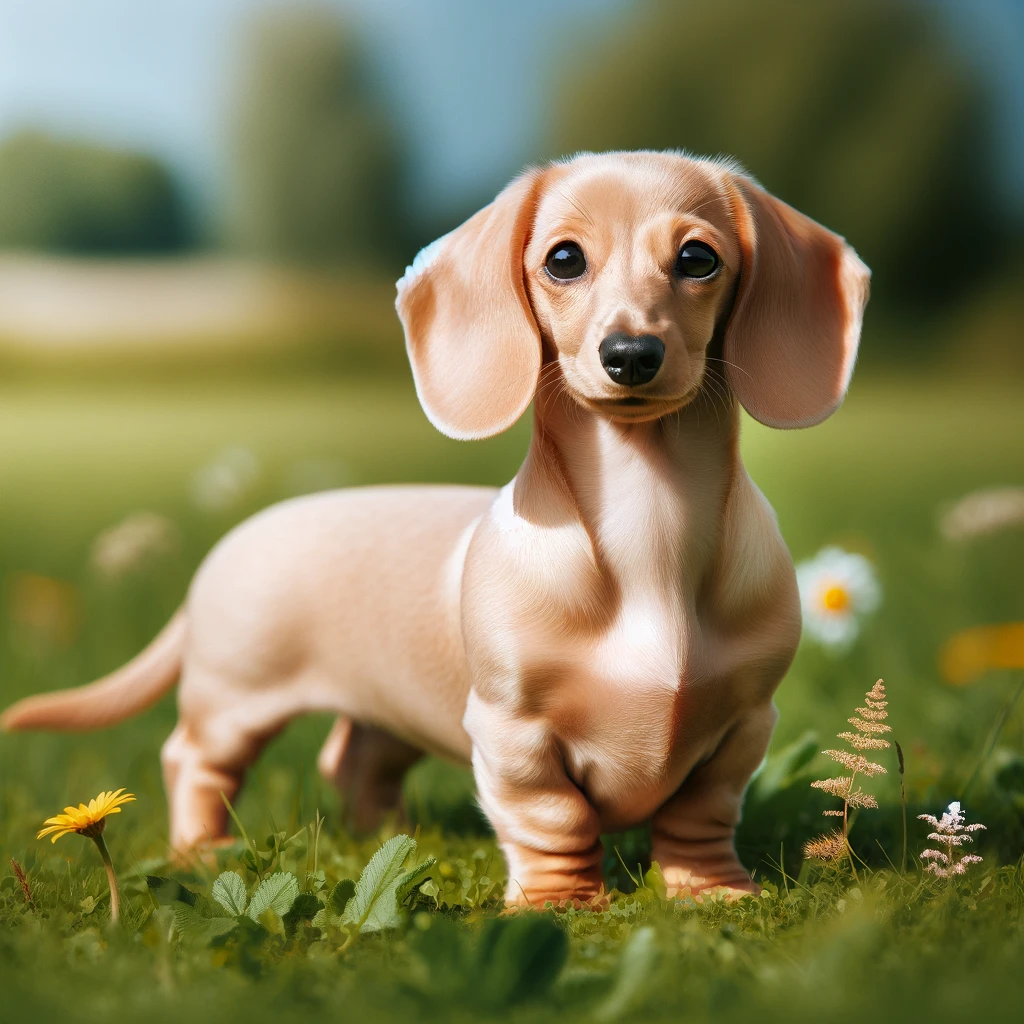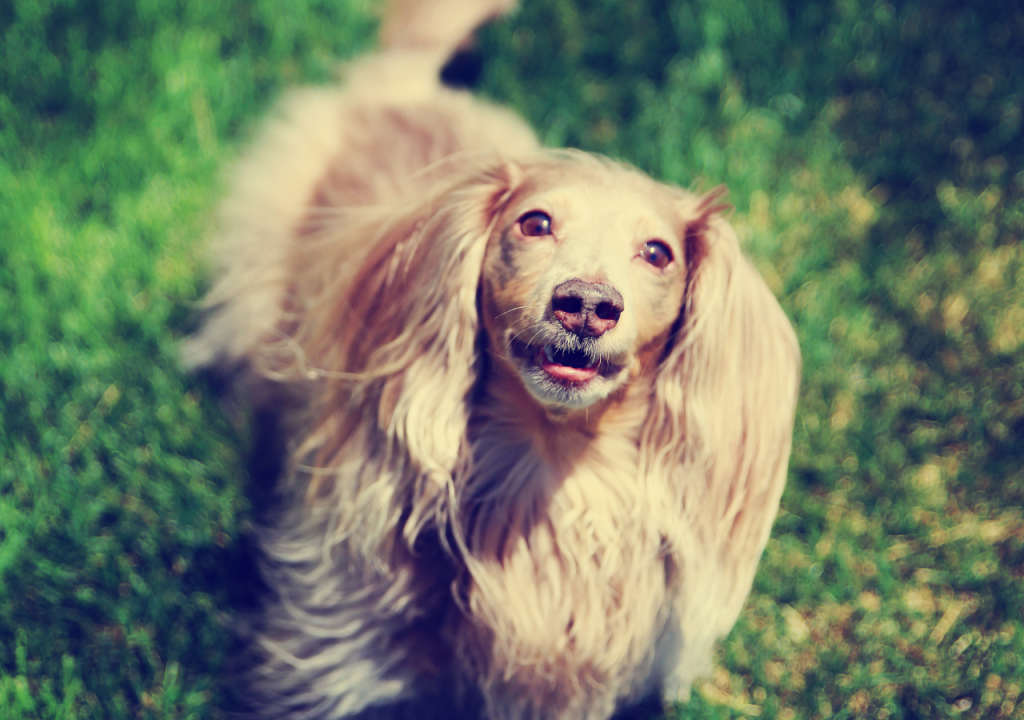Isabella Dachshunds are not just any Dachshund; they represent a rare and highly sought-after color variant that captivates the hearts of dog enthusiasts around the world.Therefore, if you want to know everything about these rare Dachshunds, make sure you know the following facts.
So far, you’ve probably wondered what is the rarest Dachshund color. Are we right? Well, besides a dapple dachshund, Isabella Dachshund is also one of the rarest among this breed. They are popular for their shimmering silver-grey coat color that looks almost unreal. Besides they are often high in price, isabella Dachshunds are also difficut to breed.
How is an Isabella Dachshund made?
An Isabella Dachshund is a unique variant of the Dachshund breed, characterized primarily by its distinctive coat color, which can appear as a shimmering, pale silver-grey. The creation of such a coat color involves a combination of genetics and selective breeding practices.
Genetics Behind the Isabella Coat Color
The coat color of Dachshunds, including the isabella shade, is determined by a combination of genes that control pigmentation. The key genes involved in determining Dachshund coat colors include:
- The B Gene (Brown): This gene affects the production of black pigment. Dachshunds carrying the recessive form of this gene (bb) will have a brown or chocolate color.
- The D Gene (Dilute): This gene dilutes the color determined by the B and E genes. Dogs with the dilute gene (dd) will exhibit lighter coat colors. For example, black becomes blue, and chocolate turns to lilac or isabella
- The E Gene (Extension): This gene can inhibit the expression of black and red pigments. A dog with the ee combination will have a red or yellow coat, regardless of what the B or D genes dictate.
For a Dachshund to display what might be termed a ‘isabella’’ coat, they typically would carry the recessive dilute gene (dd) along with other specific color genes that combine to produce the unique silver-grey appearance. This might involve a combination of the dilute gene with a lighter base color, potentially influenced by other genetic factors.

Selective breeding practices of the Isabella Dachshund
Selective breeding is a deliberate method by which breeders choose specific dogs to parent the next generation based on desired traits such as size, temperament, and coat color. In the case of achieving an isabella coat color in Dachshunds, breeders would:
- Identify and Select Breeders: Breeders would first identify dogs within their breeding stock that carry the dilute gene and other desirable color traits. This often involves genetic testing to confirm the presence of specific alleles.
- Mate Selection: Breeders then pair dogs that either display the isabella coat color or are carriers of the genes necessary to produce the color. The goal is to have offspring that inherit the dd combination along with other genetic traits conducive to the isabella color.
- Generation Tracking: Successful breeding requires tracking generations of dogs to refine and stabilize the coat color. Breeders keep detailed records of genetic traits and outcomes to guide future breeding decisions.
- Health Considerations: Responsible breeders also consider the overall health and genetic diversity of their dogs. Since the dilute gene can be associated with certain health issues, such as Color Dilution Alopecia, breeders must monitor and manage these risks.

Selective breeding for specific coat colors like isabella in Dachshunds must be done ethically and responsibly, prioritizing the health and well-being of the dogs over aesthetic traits. Through careful genetic selection and breeding practices, breeders can produce Dachshunds with this unique and beautiful coat color while maintaining the genetic health of the breed.
What is the average lifespan of an Isabella dachshund?
Rare-colored Dachshunds live slightly shorter than standard-colored Doxies due to their tendency to suffer from certain health issues. That’s why we always recommend future pet owners to carefully choose a breeder for their puppy.
Isabella dachshunds live between 12 and 15 years, and just like with any other breed, their life span is influenced by their care, diet and overall health.
What is the price of an Isabella Dachshund?
Isabella doxies are quite expensive. Since they’re difficult to breed, their price usually ranges between $2,000 and $7,000. Note that the price depends on the breeder’s reputation, geographic location, the dog’s pedigree, and whether the puppy is intended for show or as a pet.

What are possible coat color variations of Isabella Dachshunds?
Isabella Dachshunds have a unique and quite rare color that’s basically a diluted chocolate. This subtle, gorgeous color can appear in a few different variations, depending on the coat patterns and markings. Here are some possible variations you might see in Isabella Dachshunds:
- Solid Isabella: This is the simplest and most straightforward variation. It features a uniform, pale, dilute chocolate color all over the body. It’s quite striking due to its rarity and the uniformity of the color.
- Isabella and Tan: Similar to the classic black and tan Dachshunds, Isabella and tan Dachshunds have the light, diluted chocolate color with lighter, tan markings over the eyes, on the paws, and under the tail. This adds a bit of a two-tone look that’s really pretty and distinctive.
- Isabella Dapple (or Merle): This variation mixes the Isabella color with a dapple pattern, which means mottled patches of lighter and darker shades. This can give the dog a sort of mystical, cloud-like appearance that’s really unique.
- Isabella Brindle: In this variation, the Isabella color is striped with darker streaks. The brindle pattern usually appears over the base Isabella color, giving the coat a sort of tiger-stripe effect but in a much subtler, diluted chocolate hue.
- Blue Isabella: This variation is a further dilution of the Isabella color, where the typical dilute chocolate hue shifts towards a more bluish tint. This rare coat color results from a specific genetic combination that dilutes the brown even more, giving the fur a subtle, almost mystical blue-gray shade. Blue Isabellas are extremely rare and quite striking because of their unique coloration that stands out from the more common Dachshund colors.
Are Isabella dachshunds healthy?
Just like standard-colored Doxies, this type of rare Wieners can be prone to certain illnesses. Thanks to their light-colored coats, isabella sausage dogs are more prone to skin problems.
They can react very sensitively when spending a lot of time in the sun, so you should consider putting a dog-safe sunscreen on its nose and spots with less hair.
Back problems are also common in this type of Doxies. Therefore, make sure you use a harness instead of collar when taking them on strolls. They can also face common problems like obesity, which can exacerbate back issues, and they might deal with heart disease or diabetes as they age. Keeping them healthy involves regular vet check-ups, a good diet, plenty of exercise, and careful monitoring for signs of skin and coat issues, especially given their susceptibility to Color Dilution Alopecia.
Living with an Isabella Dachshund: Wrapping up
Isabella Dachshunds are a rare gem in the world of canines, sporting a unique coat color that makes them stand out in any crowd. While their striking appearance is a huge draw, potential owners should be mindful of their specific health needs, particularly regarding Color Dilution Alopecia and common spinal issues. Despite these concerns, with proper care, regular veterinary check-ups, and a loving environment, Isabella Dachshunds can make wonderful, loyal companions. If you’re considering adding an Isabella Dachshund to your family, remember that their health and happiness depend on your informed and attentive care, ensuring a fulfilling life together.



One thought on “5 Types of an Isabella Dachshund: The Ultimate Guide”